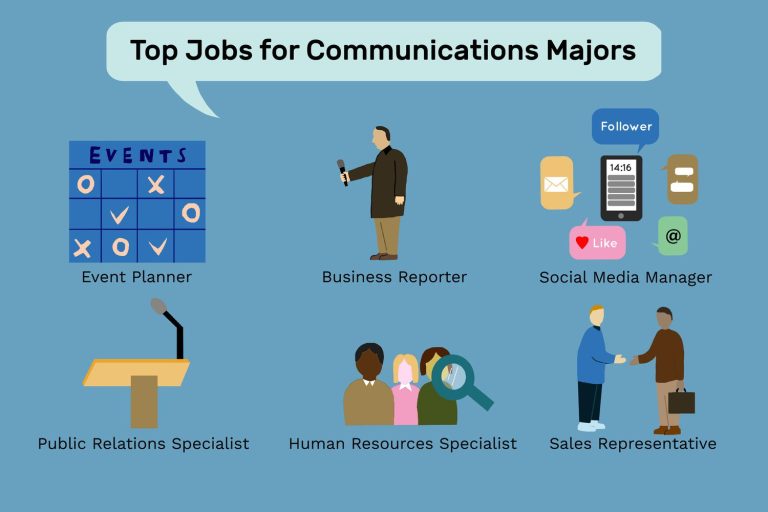How to Handle Confrontation in the Workplace – Having Tough Conversations
To handle workplace confrontation, stay calm and focus on the issue, not the person. Listen actively and communicate clearly.
Handling confrontation at work can be challenging but necessary for a healthy workplace environment. Addressing tough conversations with a calm and composed demeanor helps prevent escalation. Active listening shows respect and understanding, fostering a constructive dialogue. Clear communication ensures both parties understand each other’s viewpoints and can work towards a resolution.
By focusing on the issue rather than personal attributes, you create a professional atmosphere that encourages problem-solving. Building these skills is essential for maintaining productivity and positive relationships among colleagues. Practicing these techniques can lead to a more harmonious and effective workplace.
The Importance Of Addressing Confrontation
Addressing confrontation at work is essential for maintaining a healthy environment. Avoiding tough conversations can lead to unresolved issues and resentment. Understanding the importance of addressing confrontation can help improve team dynamics and overall productivity.
Impact On Team Dynamics
Confrontation affects team dynamics significantly. Unresolved issues can create tension among team members. This tension can hinder collaboration and communication. Addressing conflicts promptly can foster a positive work atmosphere.
Here are some impacts on team dynamics:
- Improved Communication: Open dialogue encourages transparency and trust.
- Enhanced Collaboration: Resolving conflicts promotes teamwork and cooperation.
- Increased Morale: Addressing issues boosts employee morale and job satisfaction.
- Stronger Relationships: Constructive confrontation strengthens professional relationships.
Consequences Of Avoidance
Avoiding confrontation can lead to several negative outcomes. Unresolved conflicts can escalate over time. This escalation can result in a toxic work environment.
Consider these consequences of avoidance:
- Decreased Productivity: Unaddressed issues distract employees from their tasks.
- Low Morale: Persistent problems can demotivate staff.
- High Turnover: Employees may leave due to an unhealthy work atmosphere.
- Damaged Reputation: A toxic environment can tarnish the company’s image.
Avoiding confrontation might seem easier, but it’s not a solution. Addressing issues promptly ensures a harmonious and productive workplace.
Preparing For The Conversation
Handling workplace confrontation can be challenging. Proper preparation ensures a productive conversation. This section guides you through gathering facts and setting clear objectives.
Gathering Facts
Before engaging in a tough conversation, gather all relevant facts. Accurate information helps you stay objective and focused. Use reliable sources to collect data.
- Review emails and messages
- Check meeting notes
- Consult with team members
Keep a record of all the facts in a document. This document should be easy to read and well-organized. Consider creating a table for clarity.
| Source | Information |
|---|---|
| Email from John | Project delay details |
| Team Meeting | Budget concerns |
Setting Clear Objectives
Define your objectives before the conversation. Knowing your goals helps steer the discussion.
- Identify the main issue
- Determine desired outcomes
- Plan potential solutions
Write down your objectives to keep them clear. Ensure these objectives are specific and measurable. For example, instead of saying “Improve team communication,” aim for “Hold weekly team meetings.”
Setting clear objectives ensures that the conversation stays on track. It also helps in measuring success later.
Choosing The Right Time And Place
Dealing with workplace confrontation can be challenging. Choosing the right time and place is crucial for effective communication. This ensures that the conversation is productive and respectful. Let’s dive into some essential aspects of choosing the right time and place.
Finding A Private Space
Privacy is key when handling tough conversations. A private space helps maintain confidentiality and respect.
- Book a meeting room.
- Close your office door.
- Choose a quiet, neutral location.
Avoid crowded areas like open-plan offices or busy hallways. This helps reduce distractions and interruptions. It also shows respect for the sensitive nature of the conversation.
Considering Timing
Timing can significantly impact the outcome of a tough conversation. It’s essential to choose a moment when both parties are calm and focused.
| Good Times | Bad Times |
|---|---|
| After a break | Before a deadline |
| Early in the day | End of the day |
| During a quiet period | During a busy period |
Choose a time when both parties are not stressed or rushed. This will help ensure that the conversation is productive and respectful.
Avoid scheduling the conversation during high-stress times. This includes before a big presentation or right before a deadline. Aim for a time when both parties can give their full attention.
Effective Communication Techniques
Handling confrontation in the workplace can be challenging. Effective communication techniques can make these tough conversations easier. By using active listening and ‘I’ statements, you can create a respectful dialogue. This approach helps in resolving conflicts smoothly.
Active Listening
Active listening is a powerful technique in handling confrontation. It involves fully concentrating on the speaker. Here are some key steps:
- Pay attention: Look at the speaker and show interest.
- Show you’re listening: Nod occasionally, and use small verbal comments.
- Provide feedback: Paraphrase what the speaker said to show you understand.
- Defer judgment: Allow the speaker to finish before responding.
- Respond appropriately: Be honest and respectful in your replies.
Active listening helps in reducing misunderstandings. It shows respect for the other person’s viewpoint.
Using ‘i’ Statements
‘I’ statements are another effective technique. They help express your feelings without blaming others. Here is how you can use them:
| Traditional Statement | ‘I’ Statement |
|---|---|
| “You never listen to me.” | “I feel unheard when we talk.” |
| “You are always late.” | “I feel stressed when meetings start late.” |
| “You don’t care about this project.” | “I feel worried about our project’s progress.” |
‘I’ statements focus on your feelings and needs. They help in avoiding blame and fostering understanding.
Incorporating these techniques can transform tough conversations. It leads to a more harmonious workplace.
Managing Emotions
Managing emotions during workplace confrontations is crucial for maintaining professionalism. Emotions can easily escalate conflicts, making resolution difficult. Understanding how to control these emotions ensures that conversations remain productive and respectful.
Staying Calm
Staying calm is essential during tough conversations. Take deep breaths and speak slowly. This helps you stay in control of your emotions.
- Deep breathing: This technique reduces stress and keeps you grounded.
- Pause before speaking: This gives you time to think clearly.
- Maintain a neutral tone: Avoid raising your voice or sounding aggressive.
Use these strategies to keep your emotions in check and maintain a calm demeanor.
Recognizing Triggers
Recognizing triggers helps you understand what causes emotional reactions. Identify common triggers that make you upset or frustrated.
| Common Triggers | Ways to Manage |
|---|---|
| Personal attacks | Focus on the issue, not the person. |
| Unfair criticism | Ask for specific examples and clarification. |
| Interruptions | Politely ask to finish your point. |
Being aware of your triggers can help you prepare better responses. This also prevents emotional escalation during conversations.
Finding Common Ground
Confrontation in the workplace can be tough. The key to managing it is finding common ground. This approach helps both parties feel heard and valued. It opens the door to a more productive conversation.
Seeking Mutual Interests
Start by identifying mutual interests. Ask questions to understand the other person’s goals. It helps to find areas where your objectives align. Use statements like, “I see we both want the project to succeed.”
- Listen actively to their concerns.
- Share your own goals clearly.
- Highlight shared objectives.
When both parties see the mutual benefits, it becomes easier to work together.
Compromise And Collaboration
Compromise is essential in any tough conversation. Both sides should be willing to give and take. Identify which points are non-negotiable and which are flexible.
| Non-Negotiable Points | Flexible Points |
|---|---|
| Project Deadlines | Meeting Times |
| Budget Limits | Resource Allocation |
Use a collaborative approach to find solutions that work for both sides. Use phrases like, “What if we try this?” or “How about we meet halfway?”
- Identify key issues.
- Discuss possible solutions.
- Agree on a compromise.
By focusing on common ground, compromise, and collaboration, tough conversations become easier. The workplace becomes more harmonious and productive.
Following Up After The Conversation
Following up after a tough conversation is crucial. It ensures that the discussion leads to positive changes. This step helps to clarify misunderstandings and strengthens workplace relationships.
Reviewing Outcomes
After the conversation, review the outcomes. Check if the issues discussed have been addressed. Make a list of the key points agreed upon during the talk. This list can help track progress. Also, it serves as a reference for future discussions.
| Issue | Resolution | Action Taken |
|---|---|---|
| Missed Deadlines | Set Clear Deadlines | Implemented Task Tracker |
| Communication Gaps | Regular Meetings | Weekly Check-ins |
Setting Future Expectations
Set clear expectations for the future. Discuss what behaviors and actions are expected moving forward. This ensures everyone is on the same page. It also helps prevent future conflicts.
- Clear Deadlines: Ensure all tasks have specific deadlines.
- Regular Feedback: Provide consistent feedback on performance.
- Open Communication: Encourage team members to voice concerns early.
Use these steps to create a positive work environment. It fosters trust and accountability among team members.
Building A Culture Of Open Communication
Creating a culture of open communication is essential for handling confrontations. It ensures that everyone feels comfortable expressing their thoughts and concerns. This foundation of trust and transparency can reduce the frequency and intensity of conflicts.
Encouraging Feedback
Encourage regular feedback to foster open communication. Make it a habit for team members to give and receive feedback. This can be done through:
- Weekly meetings
- One-on-one sessions
- Anonymous surveys
Feedback should be constructive and focus on improvement. Use these opportunities to address issues before they escalate. This practice helps in building trust and openness.
Creating Safe Spaces
Establish safe spaces where employees can voice their concerns without fear. This could be a physical place or a virtual platform. Ensure that these spaces are:
- Non-judgmental
- Confidential
- Supportive
Encourage the use of these spaces for honest conversations. This can prevent misunderstandings and foster a sense of community.
| Method | Purpose |
|---|---|
| Weekly Meetings | Regular check-ins |
| One-on-One Sessions | Personal feedback |
| Anonymous Surveys | Honest input |
Frequently Asked Questions
How Can I Stay Calm During Confrontation?
Maintain a steady breathing pattern and focus on listening. Stay composed to understand the other person’s perspective.
What Should I Avoid In Tough Conversations?
Avoid interrupting and raising your voice. Refrain from making personal attacks or bringing up unrelated issues.
How Do I Prepare For A Difficult Discussion?
Outline key points and anticipate responses. Practice active listening and ensure the setting is private and distraction-free.
Conclusion
Handling workplace confrontation effectively can boost morale and productivity. Practice active listening and empathy. Address issues directly but respectfully. Always aim for a constructive outcome. With these strategies, tough conversations become easier, fostering a healthier work environment. Remember, open communication is key to resolving conflicts and building stronger team relationships.

